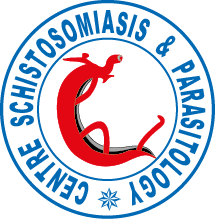DNA ‘barcoding’ of Schistosoma mansoni across sub-Saharan Africa supports substantial within locality diversity and geographical separation of genotypes.
Abstract
Schistosoma mansoni is a widespread human helminth and causes intestinal schistosomiasis in 54 countries, mainly across Africa but also in Madagascar, the Arabian Peninsula and the neotropics. The geographical range of this parasite relies on the distribution of certain species of freshwater pulmonate snails of the genus Biomphalaria. Whilst S. mansoni is known to exhibit high population diversity the true extent of this diversity is still to be fully elucidated as sampling of this taxon progressively accrues. Here a DNA ‘barcoding’ approach is taken using sequence analysis of a 450bp region within the mitochondrial cox1 gene to assess the genetic diversity within a large number of S. mansoni larval stages collected from their natural human hosts across sub-Saharan Africa. Five hundred and sixty one individual parasite samples were examined from 22 localities and 14 countries. Considerable within-species diversity was found with 120 unique haplotypes splitting geographically into five discrete lineages. The highest diversity was found in East Africa with samples forming three of the five lineages. Less diversity was found in the Far and Central Western regions of Africa with haplotypes from the New World showing a close affinity to the Far Western African S. mansoni populations supporting the hypothesis of a colonisation of South America via the West African slave trade. The data are discussed in relation to parasite diversity and disease epidemiology.
Keywords:
Evolution; Molecular epidemiology; Phylogeography; Schistosoma mansoni; cox1
